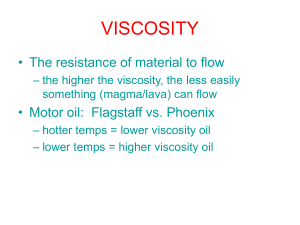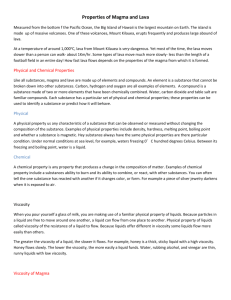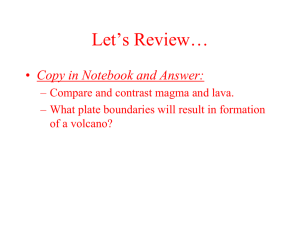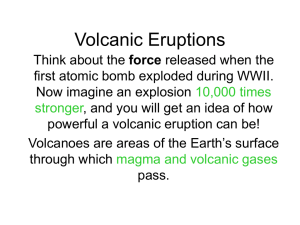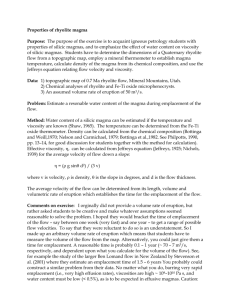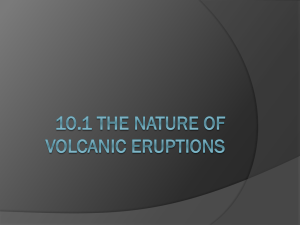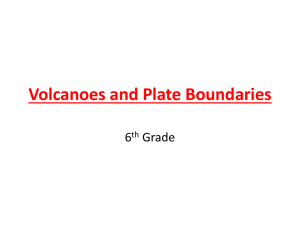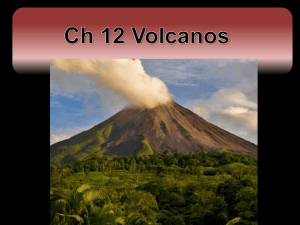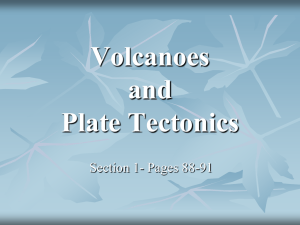Physical properties - Madison County Schools
advertisement
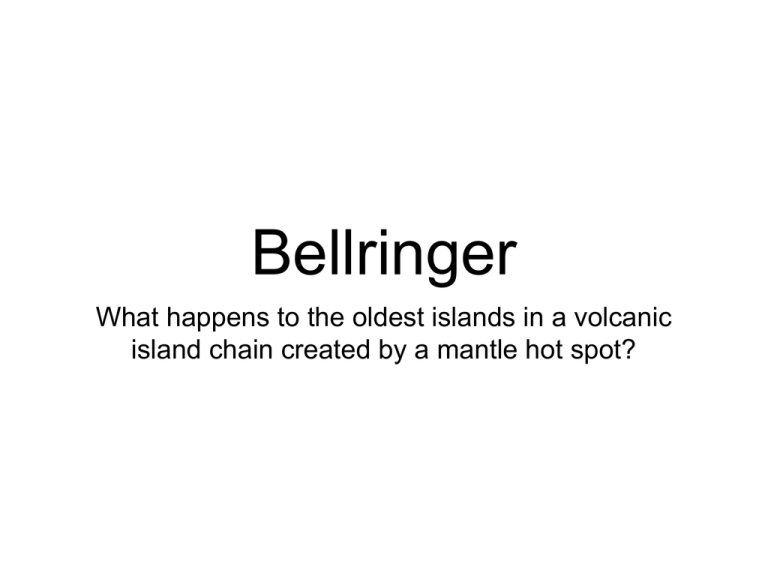
Bellringer What happens to the oldest islands in a volcanic island chain created by a mantle hot spot? Properties of Magma Notes Physical and Chemical Properties • Like other substances, magma is made up of elements and compounds, and has a certain set of properties, or traits. Properties can be physical or chemical. • An element is a substance that cannot be broken down into other substances. Carbon, Oxygen, Argon, Gold, Tin, Lead, etc. • A compound is a substance made of two or more elements that have been chemically combined. Water, Carbon Dioxide, Table Salt, Sulfuric Acid, etc. Elements C O H Compounds Physical and Chemical Properties • Physical properties are traits that can be observed without changing what a substance is made of. Examples of physical properties are hardness, color, density, melting point, boiling point, and magnetism. • Water, under normal pressure, will always have a melting point of 0°C and a boiling point of 100°C. Physical and Chemical Properties • Chemical properties are traits that can be observed only by changing what a substance is made of. Examples of chemical properties is a substances ability to burn and its ability to combine, or react, to another substance. • • You can often tell if a substance has reacted to another substance if it changes color, produces a gas, or forms a new, solid substance (precipitate). Iron’s reaction with oxygen to produce rust is an example of a chemical property. What is Viscosity? • Viscosity is a physical property of liquids. How well a liquid flows depends on its viscosity. • A liquid with a high viscosity is thick. It flows very slowly. Honey and syrup have high viscosities. • A liquid with low viscosity is thin. It flows very quickly. Water and Kool-Aid® have low viscosities. • The greater the friction between the fluid’s particles, the higher the viscosity. http://upload.wikimedia.org/wikipedia/commons/b/b7/Vi scosity.gif Video - Three different viscosities Viscosity of Magma • Silica is a common substance in Earth’s crust. Magma contains silica. Magma that contains more silica has higher viscosity. • High-silica magma produces high-viscosity lava. This lava flows slowly. • High-silica magma cools to form light-colored, felsic igneous rocks such as granite, pegmatite, and rhyolite. Rhyolite Granite Pegmatite Viscosity of Magma • Low-silica magma produces low-viscosity lava. This lava flows quickly. • Low-silica magma cools to form dark-colored, mafic igneous rocks such as basalt and gabbro. Basalt Gabbro Viscosity of Magma • • • Hotter magma has lower viscosity than cooler magma. Very hot magma produces lava called Pāhoehoe. Pāhoehoe has low viscosity. It flows quickly. It hardens into a rippled surface. Cooler magma produces lava called ʻaʻā. ʻAʻā has high viscosity. It flows slowly. It hardens into rough chunks. Pāhoehoe ʻAʻā Lava Type Pāhoehoe ʻAʻā Temperature HIGH LOW Viscosity LOW HIGH Silica Content LOW HIGH Color Rock Examples DARK Basalt Gabbro LIGHT Granite Rhyolite Pegmatite
